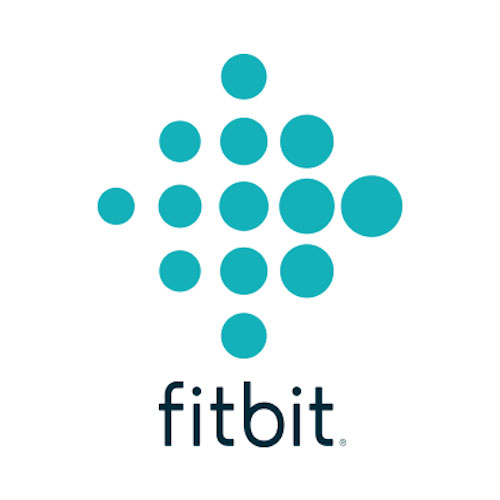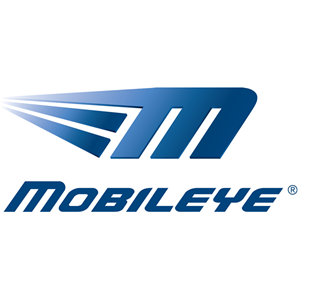Category: Independent Stock Research
EverQuote: Rethinking the Insurance Industry
 Founded in 2011 by former M.I.T. classmates Seth Birnbaum and Tomas Revesz, and headquartered in Cambridge, Massachusetts, EverQuote is a leading online insurance marketplace. EverQuote’s goal is to revolutionize the insurance shopping experience for consumers and modernize the way insurance providers reach customers. In doing so, the company intends to become the largest online store for insurance policies in the U.S.
Founded in 2011 by former M.I.T. classmates Seth Birnbaum and Tomas Revesz, and headquartered in Cambridge, Massachusetts, EverQuote is a leading online insurance marketplace. EverQuote’s goal is to revolutionize the insurance shopping experience for consumers and modernize the way insurance providers reach customers. In doing so, the company intends to become the largest online store for insurance policies in the U.S.
Without any acquisitions, EverQuote has blossomed quickly, with a compound annual revenue growth rate of 32 percent over the last five years. Revenue has risen from $126 million in revenue in 2017, to $163 million in 2018, to $249 million last year. Unlike many VC-backed companies that have required multiple rounds of financing in the face of mounting losses, EverQuote was largely bootstrapped, with just $10 million of equity capital raised to fund the business before its IPO in June of 2018. In Q3 of 2019, the company generated its first non-GAAP operating profit, and has demonstrated consistent profitability in each of the last four quarters, with cash on the balance sheet rising steadily from $37 million at the end of Q2 last year, to $54 million this year.
Automotive insurance, EverQuote’s first addressable market, remains its largest, comprising over 80 percent of revenue. EverQuote’s online platform is facilitated by proprietary data and technology, which matches consumers with insurance options offered by carriers and independent agents tailored to their specific criteria. The criteria may include desired demographics, driving history, and the prospective policy holder’s driving track record.
EverQuote has invested heavily in data science, including machine learning, as well online advertising to efficiently match buyers and sellers of insurance policies. The company’s data assets include over two billion consumer-submitted data points that have come from 65 million quote requests, and 178 billion ad impressions, which have been acquired through its more than $650 million in advertising spending since inception. Over time, the company intends to fully automate the bidding process across most of its traffic sources, and is also working to achieve deeper integration with its insurance partners.
EverQuote boasts an expansive network of more than 100 insurance carriers, including the twenty largest property and casualty carriers in the United States, as defined by premium volume. In addition, the company partners with more than 8,000 insurance agencies. EverQuote’s leading partners include Progressive Casualty Insurance Company (which accounted for roughly 20 percent of revenue in 2018 and 2019) as well as StateFarm, Farmers, Esurance, Liberty Mutual, and Nationwide.
EverQuote gives consumers a single point of reference for insurance shopping. While EverQuote’s service is free for consumers, the company generates revenue through the sale of consumer referrals to insurance providers. According to EverQuote’s 2019 consumer survey, customers reported an average annual premium savings of $610 for insurance policies purchased through its marketplace.
EvreQuote has created a self-sustaining business model, having achieved EBITDA profitability and free cash flow generation in each of the last four quarters, although its progress is not reflected in the Street Consensus, which measures GAAP profitability. As an “asset light” business, like Google and Facebook, EverQuote generates more than $1 million in revenue per employee, and over half of its 300 employees are analysts, data scientists, and engineers. The company’s balance sheet is solid, even after the recent Crosspointe acquisition, as it will likely have more than $40 million in cash and no debt at the end of the current quarter.
IPG Photonics: Shining a Light on Factory Automation
 With trailing twelve month revenue of $1.25 billion, and a recent market cap of $8.7 billion, IPG Photonics (NASDAQ: IPGP), based in Oxford, Massachusetts, is a leading developer of fiber lasers, fiber amplifiers, and diode lasers. The company’s products are utilized primarily in the automotive, industrial machinery, consumer product, and medical industries.
With trailing twelve month revenue of $1.25 billion, and a recent market cap of $8.7 billion, IPG Photonics (NASDAQ: IPGP), based in Oxford, Massachusetts, is a leading developer of fiber lasers, fiber amplifiers, and diode lasers. The company’s products are utilized primarily in the automotive, industrial machinery, consumer product, and medical industries.
IPG Photonics was founded in Russia in 1990 by then 52 year-old physicist Dr. Valentin P. Gapontsev, Ph.D. Born at the outset of World War II, Dr. Gapontsev earned his Ph.D. in laser material science from the Moscow Institute of Physics & Technology in 1972. In addition to his numerous awards in science and technology, the Russian-born Gapontsev is known as one of the fathers of fiber lasers, stemming from his original work in laser material science. Today, the 81 year-old founder remains IPG’s Chairman and CEO, and through direct and indirect share ownership, controls the overwhelming majority of the company’s common stock. Originally, IPG produced custom glass and crystal lasers, wireless temperature meters, and laser components. The company subsequently shifted focus to high-power fiber lasers and amplifiers in 1992.
IPG debuted on the NASDAQ on December 13th, 2006 in a 10.4 million common stock offering, with 7.6 million coming from the company, and 2.8 million from shareholders. Merrill Lynch and Lehman Brothers were joint book-running managers for the offering, assisted by Needham & Company, Thomas Weisel Partners, and Jeffries.
IPG pursues a strategy of vertical integration, purchasing only the raw material inputs utilized for its products. Thus, it designs and manufactures nearly every key component used in its finished products, ranging from semiconductor diodes to optical fiber preforms, to finished fiber lasers, and amplifiers. The company also creates complementary products utilized with its lasers, such as optical delivery cables, fiber couplers, beam switches, optical processing heads, and chillers. Vertical integration enables the company to reduce manufacturing costs, improve quality control, as well as ensure product integration, and the protection of its intellectual property. IPG has also accumulated over 350 patents, with more than 80 more pending.
Automotive, broadly defined, is IPG’s largest vertical market, contributing roughly 20 percent of revenue. The company’s lasers are utilized for a variety of cutting and welding applications, including body welding across all types of production vehicles. In Q1 of this year, IPG received its first large order for Adjustable Mode Beam (ABM) lasers, which are utilized for electric vehicle battery welding. The new ABM lasers allow for “spatterless” welding, greater reliability, and higher wall plug efficiency. Another key application for electric vehicle batteries come from IPG’s pulsed laser, which is utilized for foil cutting.
With its cutting edge, unique proprietary technology, focus on vertical integration, and global reach, IPG is helping to illuminate the way to automated industrial production.
Care.com to be Acquired by IAC/Interactive
 IAC/Interactive (NYSE: IAC), the large internet and media conglomerate with a market cap of $21 billion, annual sales of roughly $4.8 billion, $3.4 billion in cash, and $3.1 billion in total debt, announced its intention on Friday, December 20th to acquire Care.com for $15 per share in an all cash deal. The valuation is, according to IAC, a 34 percent premium to Care.com’s closing share price on October 25, 2019, the last trading day before a press account indicated that a deal might be in the offing.
IAC/Interactive (NYSE: IAC), the large internet and media conglomerate with a market cap of $21 billion, annual sales of roughly $4.8 billion, $3.4 billion in cash, and $3.1 billion in total debt, announced its intention on Friday, December 20th to acquire Care.com for $15 per share in an all cash deal. The valuation is, according to IAC, a 34 percent premium to Care.com’s closing share price on October 25, 2019, the last trading day before a press account indicated that a deal might be in the offing.
With a history of acquiring somewhat distressed internet companies with solid brands and customer sets, IAC’s acquisition of Care.com is consistent with several of its previous purchases, including Ask Jeeves, and Angie’s List, which following its merger with HomeAdvsior is now called ANGI Home Services (NASDAQ: ANGI). Our understanding is that IAC will roll Care.com (previously) into the IAC/Interactive umbrella. As part of the deal, IAC has already assigned a new CEO to run Care.com. It would not be unreasonable to assume that pending changes to its management and operational structure, that IAC would either establish a tracking stock, or spin-off Care.com in the future, perhaps under a new name, or with additional businesses currently owned by IAC, or ones yet to be acquired.
Undeniably, it has been a challenging year for Care.com. Back in March of 2019, The Wall Street Journal published a damaging expose which criticized Care.com’s screening processes, and found hundreds of instances in which daycare centers listed on its website were not properly vetted. The WSJ expose prompted Care.com to immediately remove flawed agency listings as well as unveil new security and background checks to be paid by the company.
The June resignation of the company’s CFO, who remained in a transition role through August 31, the early August announcement that founder, Chairwoman, and CEO, Sheila Marcelo would transition to a new role as executive chairwoman, along with a reduction in revenue and earnings guidance, all contributed to a 70 percent contraction in its share price. In our opinion, the damage inflicted on Care.com’s brand is by no means permanent, though the cost to ensure consumer satisfaction with the level of background checking on caregivers remains in flux. An additional question mark has been the cost of assigning Care.com employees to fulfill caregiving roles for the corporations and universities utilizing its last minute backup care services.
Getting Care.com’s board to agree on a take-over bid may have been easier than hiring a brand new executive management team, which would have much work to do behind the scenes to re-establish a profitable, predictable growth trajectory. A new team would also be required to make decisions publicly, rather than behind the aegis of a large conglomerate, such as IAC/Interactive. We have no reason not to believe that all reasonable strategic buyers were consulted during the company’s sale process, so it is unlikely—though not impossible—that another suitor would enter the fray to make a higher bid Care.com.
Akamai Technologies: Zeroing in on Zero Trust
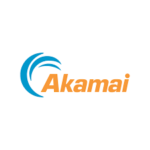 Through internal development and acquisitions, cloud security has grown rapidly to become an $800 million annual run rate business for Cambridge, MA-based Akamai Technologies (NASDAQ: AKAM). The business is on track to generate nearly 30 percent of sales this year, up from 16 percent of sales for all of 2016. Through its early work with Kona Site Defender, which protects websites, web applications, and APIs against cyberattacks, Akamai developed a core competence in protecting against Distributed Denial of Service (DDoS) attacks against data center software assets. Such attacks involve the high-jacking of a large number of computer servers to overwhelm a target website or data center with malicious traffic.
Through internal development and acquisitions, cloud security has grown rapidly to become an $800 million annual run rate business for Cambridge, MA-based Akamai Technologies (NASDAQ: AKAM). The business is on track to generate nearly 30 percent of sales this year, up from 16 percent of sales for all of 2016. Through its early work with Kona Site Defender, which protects websites, web applications, and APIs against cyberattacks, Akamai developed a core competence in protecting against Distributed Denial of Service (DDoS) attacks against data center software assets. Such attacks involve the high-jacking of a large number of computer servers to overwhelm a target website or data center with malicious traffic.
With users, applications and devices moving outside the traditional perimeter of corporate firewalls, new approaches are required to ensure against the infection or theft of corporate data assets. To address this growing problem, Akamai has been developing a new cloud security architecture which it calls Zero Trust. The underlying principle behind zero trust is akin to that promulgated by former US president Ronald Reagan, who described the necessity to “trust, yet verify” any agreement that might be reached with the Soviet Union. In the same way that treaties must be verified, so must the identities of those who present a higher risk to data access, including contractors and employees in remote geographies. In such instances, corporations will wish to only grant precise access to what is needed, rather than broad access to a corporate network.
A key element of Akamai’s approach is centered around technology acquired last year from Janrain, which helps Akamai to decipher login history and access patterns, such as the city and time of day when such logins occur. With technology provided by Janrain, Akamai now helps customers in the area of identity proofing, authentication without using passwords, access control, web fraud prevention, and advertising fraud.
Last week, Akamai announced the tuck-in acquisition of KryptCo, a Cambridge, MA startup, whose engineers have developed mobile-based technology for multi-factor user authentication, which will fit into Akamai’s Enterprise Access Control Framework. Authenticating and assigning users the correct level of access to a data network remains a key technical challenge, as many approaches to access control are vulnerable to phishing attacks, in which user data, including alphanumeric login credentials, are targeted. Kryptco has developed a new approach, which does not require a pin number for authorization.
By next year, cloud security could contribute in excess of $1 billion in revenue and comprise about 34 percent of sales, which would be twice the percentage of revenue contributed just three years ago. The challenges posed by corporate data theft and espionage are likely to keep the category of zero trust in focus for many corporations and government entities for many years to come.
Care.com: Addressing Safety in the Gig Economy
 As the internet has transformed commerce, social, and work life over the last 10 years, consumers have become increasingly willing to entrust personal safety to operators of websites that provide matching services. Dating over the internet, once taboo for fear of linking up with a sociopath, has given way to comfort with finding in some cases, partners for life. Finding and accepting transportation over the internet comes along with the risk of placing one’s personal safety in the hands of a driver whose qualifications and personal habits are something of a mystery.
As the internet has transformed commerce, social, and work life over the last 10 years, consumers have become increasingly willing to entrust personal safety to operators of websites that provide matching services. Dating over the internet, once taboo for fear of linking up with a sociopath, has given way to comfort with finding in some cases, partners for life. Finding and accepting transportation over the internet comes along with the risk of placing one’s personal safety in the hands of a driver whose qualifications and personal habits are something of a mystery.
On Friday, March 8th, the day after Care.com released Q4 results, The Wall Street Journal published a highly critical article about Care.com’s screening practices for caregivers in its online edition, entitled, “Care.com Puts Onus on Families to Check Caregivers’ Backgrounds—With Sometimes Tragic Outcomes; The largest online marketplace for such services says its members are responsible for ensuring background checks are performed.” The article was also published on the first page of the Journal’s week-end print edition. Without reviewing here the entire contents of the article, the most salient points were that the Journal had found hundreds of instances in which daycare centers were listed on Care.com’s website as state-licensed, but were not. In at least one instance children died while under the care of a non-licensed facility.
The article was also critical of Care.com’s screening procedures. Care.com’s preliminary screening checks multijurisdictional databases, as well as the National Sex Offender public website, as part of a manual process, which can take up to 48 hours, and which rejects an estimated 10 percent of those seeking a listing within 24 hours. Existing and prospective customers can also purchase additional packages that range in price from $59 to $300 to conduct a more detailed level of screening.
The article, while specific to Care.com, raises the question of responsibility and liability for companies operating in the gig economy. Like LinkedIn, Indeed, and other jobsites, Care.com does not conduct employment level background checks. Uber, for example, like Care.com, conducts a background check on its service providers, ie. drivers. This includes a Motor Vehicle Record review, as well as a criminal background check. Background checks for Uber drivers, according to the Uber website, are conducted by Checkr, a third party background check provider that is accredited by the National Association of Professional Background screeners.
On March 11th, Care.com filed an 8-K with the SEC in which it noted that it would no longer allow caregivers that are new to the platform to engage with the platform until the preliminary screen has been completed. The company also disclosed that it was exploring solutions to help verify the identity of both caregivers and care seekers on its platform. Care.com will also be looking at potential changes regarding notification of members on its websites when, for example, a caregiver is no longer allowed to provide services on the platform. Care.com also eliminated all listings of daycare centers that were not updated and reviewed by the daycare center itself. Finally, Care.com announced a new board level committee that will oversee the company’s safety and cybersecurity programs.
To be sure, the concept of guarding personal safety over the internet continues to evolve. It is likely that industry best practices will emerge over time. However, there is still likely to be an element of trust every time someone steps into an Uber or Lyft-driven vehicle, accepts an invitation for lunch through an online dating site, hires a person based in part on job experience posted on a website, or employs a care-giver in their home.
Fitbit: Struggling to Stay in Shape
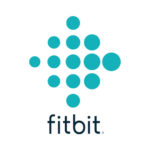 With trailing 12-month sales of $1.6 billion, a market cap of $1.8 billion, $658 million in cash and zero bank debt, Fitbit, founded in 2007, and based in San Francisco, CA, is the largest provider of internet-connected health and fitness tracking devices. The company addresses a multi-billion dollar annual revenue opportunity comprised of health-conscious consumers who wish to track daily progress toward achieving weight loss and fitness goals. The company offers a broad product line, consisting of six activity trackers that range in price from $60 to $150 at retail, and two smartwatches, priced at $200 and $300, respectively. Fitness trackers account for roughly 70 percent of revenue currently, with smartwatches accounting for most of the remainder.
With trailing 12-month sales of $1.6 billion, a market cap of $1.8 billion, $658 million in cash and zero bank debt, Fitbit, founded in 2007, and based in San Francisco, CA, is the largest provider of internet-connected health and fitness tracking devices. The company addresses a multi-billion dollar annual revenue opportunity comprised of health-conscious consumers who wish to track daily progress toward achieving weight loss and fitness goals. The company offers a broad product line, consisting of six activity trackers that range in price from $60 to $150 at retail, and two smartwatches, priced at $200 and $300, respectively. Fitness trackers account for roughly 70 percent of revenue currently, with smartwatches accounting for most of the remainder.
In the fourth quarter of 2016, Fitbit hit a brick wall amid execution challenges related to manufacturing and channel management. Missteps included being slow to address excess channel inventory, as well as operational challenges, including a poorly-timed headcount increase of 80 percent during 2016. In response to changing market conditions, management took corrective action at the start of 2017, including a six percent workforce reduction, and streamlining the number of devices offered. In addition, the company was reorganized around fitness devices and enterprise health.
While Fitbit continues to maintain a strong presence in the activity tracking market, the success of the Apple Watch, a higher end, more full-featured family of devices has redefined the market, and, to some degree, siphoned off demand for activity trackers. Fitbit has responded to this changing market dynamic through the introduction of two smartwatches, the Ionic, launched in late 2017, and more recently, the Versa. However, the company continues to face price competition in its core fitness tracker market, and has experienced soft demand for these products in the US in particular, its largest market. As a result, greater emphasis will be placed on smartwatches for future growth.
While smartwatches carry higher ASPs, they also feature lower gross margins than fitness trackers. Near term, the company is unlikely to improve by much its current gross margin, which hovers in the low 40 percent range. In the meantime, the company’s current cost structure prevents it from achieving break-even. While Fitbit maintains a strong cash position of more than $658 million and no debt, it has steadfastly refused to implement a share buy-back, preferring instead to utilize cash for leasehold improvements, along with tuck-in acquisitions, most recently geared to expanding its limited position in health-related services.
The firm’s reliance on the retail channel, including mass merchants and specialty retailers remains a source of concern, given the mixed signals coming from the retail industry, as well as a policy of recognizing revenue based on sell-in, rather than sell-through. As a final investor caveat, we note its dual class share structure guarantees the founders perpetual control of the voting rights of the company, which keeps it insulated from shareholder input. Overall, we see Fitbit as a company with longer term appeal, if it can manage to slim down for future success.
Care.com: A Linked In For Family Care
 With trailing twelve month sales of $165 million, a market cap of roughly $555 million, $96 million in cash and no debt, Care.com has become the leading online destination for finding and managing family care in the US. Like LinkedIn, which matches job seekers with prospective employers, Care.com is focused on matching the needs of families and caregivers creating in essence a one-stop shop for family services throughout the lifecycle of a family or individual household.
With trailing twelve month sales of $165 million, a market cap of roughly $555 million, $96 million in cash and no debt, Care.com has become the leading online destination for finding and managing family care in the US. Like LinkedIn, which matches job seekers with prospective employers, Care.com is focused on matching the needs of families and caregivers creating in essence a one-stop shop for family services throughout the lifecycle of a family or individual household.
Led by founder and CEO Sheila Lirio Marcelo, and Michael Echenberg, EVP of finance and CFO, Care.com targets a large addressable market, as evidenced by the fact that US consumers spent $300 billion on family care services last year, including child day care, housekeepers, nursing care facilities, tutoring, and pet care services. The market remains highly fragmented, served by traditional family care agencies, as well as brick and mortar chains that provide a variety of services.
Last year in the US, consumers spent over $300 billion on family care services, including child day care, housekeepers, nursing care facilities, tutoring, and pet care services. Services providers include nanny agencies, child day care centers, elderly care services, including in- home services and nursing care facilities. Specialized service providers for tutoring and pet care, as well as other online destinations provide a wide variety of competitors in this highly fragmented market.
Family care decisions often reside with a female head of a household, the primary audience targeted by Care.com. Decisions for services providers are often based on word of mouth stemming from personal networks. Decisions must be made with regard to the preference for in-home services, or brick and mortar facilities outside of the home.
Care.com identifies its primary target market as the roughly 46 million US households with income greater than $50,000 per year with either a child under the age of 18 and/or a senior aged 65 and over. The company also includes an estimated 15 percent of households with incomes under $50,000, with similar dynamics. Care.com’s in-home consumer services remain in the early phase of market growth, yet benefit from some compelling demographic facts and trends, which include the rise in single parent households, the prevalence of dual income households, an aging population, and increasing trust in the internet as a destination to help make decisions relating to family, home and health.
In just 10 years, Care.com has carved out an enviable internet presence, which features more than 26 million registered users, comprised of nearly 15 million families, and more than 11 million caregivers. At the end of the most recent quarter, 320,000 paying families purchased a subscription to the company’s caregiver listings, and/or the company’s service for household payroll and tax preparation services.
Key swing factors that will determine Care.com’s ability to rise or fall over the next 12-18 months include it ability to:
- Grow its core US consumer business through continuous improvement to its core matching platform, as well as targeted initiatives to grow senior care, housekeeping, and pet care, leveraging its registered community of more than 26 million members.
- Develop awareness as a trusted source for families and caregivers, through both its own accreditation, as well as the halo effect provided by corporations, non-profits, and potentially insurance plan providers that adopt and promote its services.
- Drive additional revenue growth from three key growth initiatives: employer-sponsored family services for employees, overseas expansion, and marketing programs for daycare, nanny, and elderly care agencies.
For more information on Battle Road’s 24 month assessment of Care.com, please contact info@battleroad.com.
Twitter: Obstacles to Overcome
 As of this writing in late December, Twitter (NYSE: TWTR) continues to struggle, relative to its internet advertising peers Facebook (NASDAQ: FB) and Google (NASDAQ: GOOGL). Despite a flurry of activity in the fall, during which the company was rumored to be on the auction block, the stock has floated back down to earth, and then some, as investors consider several ongoing challenges faced by the company. Among these are persistent management turnover, a struggle to rekindle user growth, and what we perceive to be mediocre earnings quality.
As of this writing in late December, Twitter (NYSE: TWTR) continues to struggle, relative to its internet advertising peers Facebook (NASDAQ: FB) and Google (NASDAQ: GOOGL). Despite a flurry of activity in the fall, during which the company was rumored to be on the auction block, the stock has floated back down to earth, and then some, as investors consider several ongoing challenges faced by the company. Among these are persistent management turnover, a struggle to rekindle user growth, and what we perceive to be mediocre earnings quality.
Management Turnover Continues
In the first 18 months following its IPO in November of 2013, Twitter was plagued by rampant management turnover, including a 60-day interval, during which three of the top five executives listed in its S-1 filing resigned or were reassigned to new posts in the company. Jack Dorsey, Twitter’s Chairman and co-founder, became CEO in October of 2015, and, until recently, management turnover had stabilized.
On November 7th Twitter COO Adam Bain informed the company of his decision to resign, after a six year stint, which featured a role as head of advertising sales. Two days later, Twitter announced that it had appointed CFO Anthony Noto as COO. Noto will continue in a dual role as COO and CFO until a new CFO is hired. The COO position is crucial, as Twitter’s CEO Jack Dorsey continues to split his time between Twitter and Square, another company that he co-founded. Noto, who had been in charge of live content, in addition to his CFO responsibilities, is now in charge of global advertising sales, data, MoPub, as well as global partnerships and business development.
Then on December 20th, Twitter’s chief technology officer, Adam Messinger, resigned. On the same day, Twitter’s VP of product, Josh McFarland let it be known that he was leaving the company to join a venture capital firm.
Working to Rekindle User Growth
Twitter reported its lowest-ever rate of year over year revenue growth in Q3 2016, as advertising sales rose just six percent over the prior year. This was the seventh consecutive quarter that sales growth declined. Monthly active users (MAUs) grew by just three percent in the last quarter. In addition, the company has, for several years, declined to report the number of daily active users, which are suspected to be considerably lower than its 317 million MAUs.
Twitter is working behind the scenes to induce users to utilize the service more frequently. Efforts underway include the addition of new content, such as Thursday Night Football, as well as the application of machine learning and artificial intelligence to improve the user experience, particularly in the area of notifications, and home timeline, where the majority of user time is spent. The company is focusing in particular on improving the relevance of user notifications, and emphasizing topics and interests, rather than following people per se, as methods to improve user engagement.
Earnings Quality Remains Poor
Like most VC-backed West Coast technology companies, Twitter utilizes a healthy dose of stock-based compensation, which reduces the near term cost of compensating employees, but passes the longer term cost along to shareholders, who are left to absorb the increased issuance of stock in the form of reduced earnings per share, once the options grants are exercised. In the third quarter of 2016, stock-based compensation accounted for 32 percent of gross operating expenses. SBC is particularly noteworthy within research and development, where it accounted for 49 percent of gross research and development expenses in the third quarter.
Another area of concern regarding Twitter’s EBITDA presentation is how it accounts for research and development costs. Twitter continues to capitalize, rather than expense, a considerable portion of its research and development costs. While this is a perfectly legal practice, we believe R&D costs should be expensed in the period in which they are incurred, rather than capitalized as assets that can be amortized later through COGS, at which point the non-cash amortized expense is viewed by many to be inconsequential.
Twitter continues to languish relative to its internet advertising peers. Our sense is that the company still has obstacles to overcome, as its management ranks continue to shift, user growth remains tepid, and the company’s earnings quality remains low.
Mobileye: Behind the Delphi Automotive Partnership
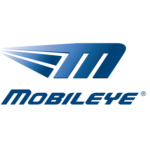 While much attention has been focused on Mobileye’s (NYSE: MBLY) decision to dissolve its OEM supplier relationship with Tesla Motors (NASDAQ: TSLA), a more important development in our opinion is Mobileye’s decision to work more closely with Delphi Automotive (NYSE: DLPH) on a new OEM solution focused on autonomous driving.
While much attention has been focused on Mobileye’s (NYSE: MBLY) decision to dissolve its OEM supplier relationship with Tesla Motors (NASDAQ: TSLA), a more important development in our opinion is Mobileye’s decision to work more closely with Delphi Automotive (NYSE: DLPH) on a new OEM solution focused on autonomous driving.
On August 23rd Mobileye announced a new partnership with Delphi Automotive PLC (Delphi hereafter), one of its largest Tier One customers, with whom it has been working for over ten years. The new arrangement envisions the creation of a turnkey autonomous driving package for the most advanced stages of driving automation. A major focus for Delphi is electronics and safety, a business segment through which it provides software, systems, and components for car passenger security, comfort and safety, including passive and active safety electronics, displays, and mechatronics. Delphi’s products for ADAS include technology provided by Mobileye, as well as a number of other suppliers, whose products range from radar, camera systems, and software, to sensors.
Like many of Mobileye’s Tier One customers, Delphi has been working on various initiatives relating to advanced driver assisted and driverless car features. A little more than a year ago, Delphi acquired Ottomatika, a Carnegie Mellon University spin-out, to enhance its active safety and automated driving capabilities. Delphi is now in the process of integrating Ottomatika’s automated driving software into its active safety systems to create a platform to make human-like decisions. Delphi also made an equity investment in Quanergy in order to develop low-cost, high performance solid state LiDAR products that will provide a complete vehicle perception solution for Level 3 and Level 4 automation applications for semiautonomous or driverless vehicles.
A key part of the agreement between Mobileye and Delphi calls for the companies to combine efforts on machine learning to create a new class of machine intelligence that mimics human driving, including ways for a driverless car to negotiate with other vehicles to merge into urban traffic, a key challenge for achieving real-world automated driving. Under the terms of the agreement, the two companies will work toward creating a full turn-key package for Level 4 and Level 5 automation by 2019. Beginning at the Consumer Electronics Show in January, the companies plan to demonstrate a prototype vehicle. Fleet testing is slated to begin in 2017.
Even though Delphi is a Mobileye customer, Delphi’s R&D projects raised the suspicion in our minds that the companies might compete against one another in the future. However, the new partnership makes clear that the two will be coordinating their efforts for a number of reasons, not the least of which is a common competitive threat, as each company seeks to blunt the impact of Continental AG and Robert Bosch Group, two German-based Tier One automotive suppliers, both of whom have ambitious driver assisted technology initiatives underway. Since Bosch, Continental, and Delphi each work with all of the largest 25 global car makers, much is at stake. Mobileye has the ability to help Delphi create a truly differentiated driverless car product, and in doing so, will strengthen one of its key alliances.
Proto Labs: Growing Pains Begin
 With trailing twelve month sales of $289 million, and a market cap of roughly $1.6 billion, Proto Labs, based in Maple Plain Minnesota, is the largest provider of quick turn manufacturing services, with offerings for plastic and metal-machined parts. Through the use of patented technology for plastic injection molding and CNC machining, as well as an advanced web-based ordering system, PRLB is an outsourced partner to its more than 8,000 customers, who seek help in creating prototypes as well as production runs of up to 10,000 parts. In addition, PRLB has acquired a couple of companies that provide 3D printed part services, which collectively account for about 13 percent of sales.
With trailing twelve month sales of $289 million, and a market cap of roughly $1.6 billion, Proto Labs, based in Maple Plain Minnesota, is the largest provider of quick turn manufacturing services, with offerings for plastic and metal-machined parts. Through the use of patented technology for plastic injection molding and CNC machining, as well as an advanced web-based ordering system, PRLB is an outsourced partner to its more than 8,000 customers, who seek help in creating prototypes as well as production runs of up to 10,000 parts. In addition, PRLB has acquired a couple of companies that provide 3D printed part services, which collectively account for about 13 percent of sales.
Proto Labs provides customers with the crucial benefits of faster time to market, improved product quality, and the ability to quickly customize low volume production runs. With seven manufacturing facilities around the world, Proto Labs derives less than 25 percent of its revenue from overseas operations. The company’s customers include manufacturers and designers of medical devices, cars, aerospace, defense, and aviation products, as well as consumer electronics, and industrial machinery. Each quarter, Proto Labs conducts a high level of repeat business within its customer base, typically around 80 percent. Importantly, no customer accounted for more than two percent of sales in 2015.
Large industrial manufacturers have been reluctant in the past, for a variety of reasons, to outsource prototyping and production. The reasons relate to the desire to maintain captive production of prototypes and custom parts, and the preference to keep low volume manufacturing in house. However, the trend toward mass customization, in which consumers desire near custom-built products in smaller quantities with fast turnaround times is at odds with the core competency of many manufacturers who are unable to achieve the desired unit costs that come with low volume production. Outsourcing production also allows companies to concentrate on other core competencies, such as product design, marketing, distribution, and customer service.
However, recent challenges attendant to soft demand in the industrial machinery vertical, as well as challenges in integrating the Alphaform 3D printed parts service will weigh on sales growth and margin expansion.
Proto Labs: Recent Developments
Soft Demand in North America
Proto Labs’ Q2 revenue of $75 million grew by 17 percent over the prior, including the results of Alphaform, a 3-D printing operation which was acquired last year, and contributed nearly $5 million in revenue in Q2. US revenue, which accounts for 74 percent of sales, grew by just six percent versus the prior year, the slowest rate in a couple of years. Despite the fact that no single customer accounts for more than two percent of sales, Proto Labs is seeing weakness in its top 20 accounts, and cited industrial and commercial equipment as particularly soft verticals in the quarter. Importantly, plastic, rubber and die cast injection molders and machine shops, who normally outsource prototypes and low volume production runs to Proto Labs, are now doing more in-house manufacturing of these parts and prototypes, due to their own excess capacity.
Proto Labs is also seeing project delays. CNC Machining operations, which normally account for about a quarter of quarterly sales, were relatively weak, rising by just seven percent over the prior year. Bright spots during the quarter include relatively strong performance from both Europe and Japan, which account for 23 percent, and three percent of sales, respectively. Europe, excluding the contribution from Alphaform, grew by 24 percent, and Japan grew by 46 percent.
Despite a soft quarter, Proto Labs’ quality of reporting remains consistently strong. During the second quarter PRLB generated $20 million in cash from operations and allocated $14.1 million to capital expenditures, of which $8 million were for facilities, as the company is adding capacity in North Carolina, and in Japan. As a result, cash on the balance sheet increased by $7 million on a sequential basis.
Alphaform Impact
Alphaform, a German-based 3D printing operation acquired at the end of 2015, remains an integral part of Proto Labs’ strategy to accelerate its European operations in the 3D printed parts services business. 3D printing contributed $9.1 million in revenue in Q2, flat with the preceding quarter, and up 67 percent versus the prior year. However, the growth was almost entirely due to the addition of Alphaform last year. When excluding the $4.8 million contribution from Alphaform, 3-D printer revenue growth was nominal.
Alphaform diluted the company’s gross margin by 310 basis points, a pattern which has been the case since the company was acquired. The lingering impact of certain Alphaform contracts with lower gross margins, as well as several niche businesses such as metal and magnesium injection molding, which are in the process of being discontinued by Proto Labs, contributed to relatively weak margins in the quarter.
Sales Management Disruption
Back in April of 2016, Proto Labs disclosed that its VP of global sales had resigned. Since then, the company has been hiring new sales managers, in an effort to reduce the ratio of sales managers to sales people. Proto Labs has also engaged a consulting firm to examine its sales processes and recommend new ones, pending their conclusions. The company is also in the process of hiring a new chief revenue officer, which it expects to do by the end of the calendar year.
Prognosis
Despite the above-mentioned growth pains, overall, we see Proto Labs as among the best positioned manufacturing technology companies. Proto Labs maintains a strong balance sheet, with total cash and securities of $164 million, or $6.18 in cash per share, and no debt. The company maintains a conservative current ratio of 6.3, and accounts receivable DSOs were a modest 41 days at the end of the quarter, up by just a day versus the prior year. Return on equity was 15 percent on a trailing twelve month basis, consistent with prior periods. Importantly, Proto Labs has done nothing to stretch its quarterly performance, and maintains a high quality of reporting integrity. The company’s expertise in manufacturing materials and production should continue to position it well for the long term.




